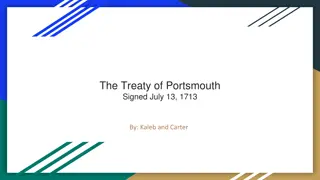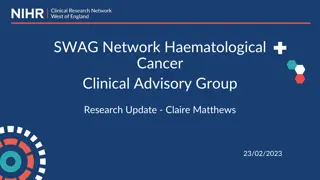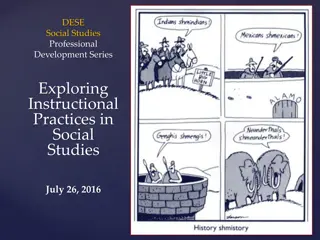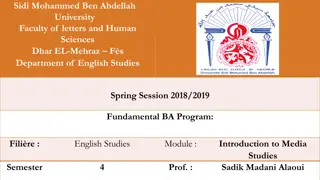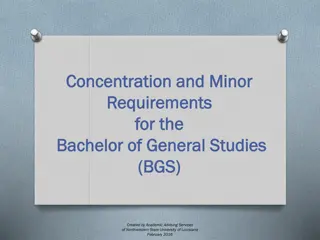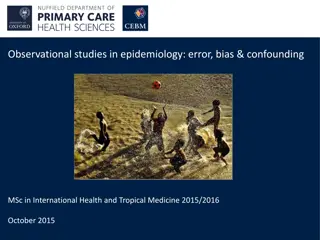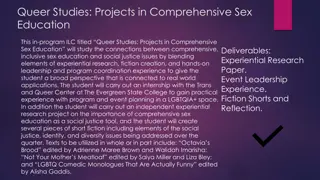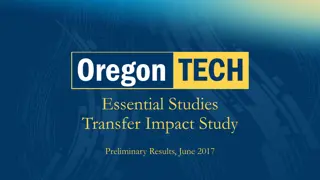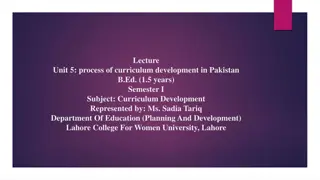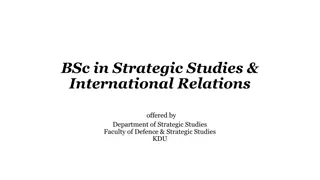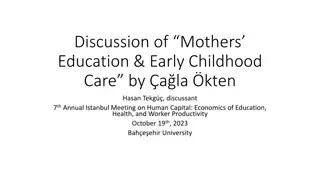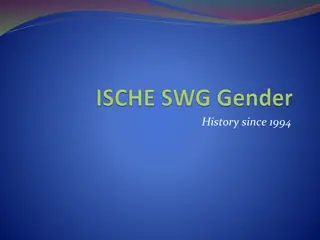Exploring Wabanaki Studies in Education: A Comprehensive Journey
Delve into the rich heritage of the Wabanaki people through a structured educational approach spanning three years. Uncover their pre-history, oral traditions, and historical narratives while emphasizing the modern-day challenges faced by Maine Tribes. Learn to develop culturally appropriate lesson plans and create an inclusive classroom environment that dispels common misconceptions about Wabanaki culture.
Download Presentation

Please find below an Image/Link to download the presentation.
The content on the website is provided AS IS for your information and personal use only. It may not be sold, licensed, or shared on other websites without obtaining consent from the author. Download presentation by click this link. If you encounter any issues during the download, it is possible that the publisher has removed the file from their server.
E N D
Presentation Transcript
Teaching Wabanaki Studies John Bear Mitchell
Introductory Topics State Level Wabanaki, Past/Present What s their pre-history? Their oral histories? Anthropological? Archeological? What s their history? How do they tell it? How do non-native historians tell it?
Introductory Topics Local Level Regional Topics What tribe(s) lived there? How do you discover who they were/are? What are you resources? Where do you find them?
Talking Points To Address You, as a teacher, plan Year One Create 3 lesson plans Focus on the big picture topics of the Wabanaki identify them and their past and current locations.
And then Year Two - create 3 more lesson plans. Focus on your local pre-history and history.
And still then Year Three create 3 more lesson plans. Now you have a unit. Keep it updated. Focus on current topics of Maine Tribes Political/Social/Economic/Environmental Emphasis should be made to include that the Wabanaki are a modern day people dealing with modern day issues.
What is important? Local History Use local resources (libraries, landmark names, or any other resources). State History Beyond the Border. Keeping in mind that Wabanaki exist beyond Maine but focus on Maine. Do not exclude Canadian Wabanaki.
What should you Avoid? Spirituality Any religious aspects of the Wabanaki. Songs and Dances unless you have a true visiting Wabanaki person.
Create a Culturally Appropriate Classroom This is the most important aspect of creating a culturally appropriate learning environment for your students. Dispel the myths Thanksgiving Extinction Brutality
Do this by Resource Evaluation Evaluate all of your resources Always question your resources Always find the answers in more than 1 or 2 resources. If possible, use a resource written by a Wabanaki person.
Resource Evaluation Questions to Consider Evaluate: Film Books Humans as Resources for Wabanaki Studies
Questions to Consider Would this material help Wabanaki identify and be proud of their heritage? Would the material encourage a negative image for the non-Wabanaki reader? Are both sides of the issue, event, or problem presented?
Are the Wabanaki stereotyped in this material: Through the illustrations? Through the storyline? Through the content? Through character dialog?
Would this material assist in establishing a positive image for the Wabanaki? Considering the time period or setting of this material, do the illustrations/situations authenticate the Wabanaki way of life? Does the material perpetuate the myths about Wabanaki people?
Is the author biased against Wabanaki people? Is the author qualified to write a book dealing with the Wabanaki? Could this material be used in a school classroom or library to increase the awareness and understanding of the American Indian? Does the content seem authentic and accurate?
Is the content well organized? Does the material generalize about Wabanaki? If you are using a book of myths or legends is the book minimalizing these stories as fake, romanticizing, or devaluing the intent of the story?
Evaluating Humans Evaluation of in-class Speakers, Singers/Drummers, and/or Storytellers Maine State Law Title 17 Chapter 59 Subchapter 1 Subsection 1637 (2011). False claims of membership in federally recognized tribe in the State Maine. Penalty - a person that violates subsection 1 commits a civil violation for which a fine of not more than $2,500.00 may be adjudged. The judgment is for both the payee and the payer for a total of no more than $5,000.00.
Knowing that Maine has a law against impersonators, it is very important to make sure you are hiring authentic Native folks. A descendant, a person from a tribal heritage group, a re-enactor, is not necessarily a member or citizen of a Federally recognized tribe.
Address These Five Points 1. Can the person prove membership/citizenship in a Federally recognized tribe? There is really no real way for you to scrutinize this but it never hurts to ask. If the human instantly become offended by this question you may have your answer. Can they provide recommendations or reference from the Federal tribe they are affiliated with?
2. Does the speaker have a romantic Indian name, (Fluttering Feather, Yellow Bear, Walks Strong, Tall Oak)? This is not a deal breaker but be wary. Most Native folks have a common name. Some Native folks do go by a Native name, which is sometimes framed by that common name. What is a common name? For example, John Bear Mitchell is a common name where Bear, is literally a middle name. Notice it s not John Bear Mitchell.
3. Does the speaker come to the classroom dressed in attire that depicts Native Americans in the past and not the present? Native presenters will be dressed in every day clothing. We are a modern people and are comfortable in current day attire. A presenter who wears clothing depicting the past will give the impression that we do not exist in the present. This is not the impression we want your students to have.
4. Does the speaker bring traditional attire to show your students how Native Americans used to dress at various time-periods in history? This is more appropriate. There are different types of traditional attire. Ceremonial attire, different styles of everyday clothing from different time periods in history, and the attire worn pre-European contact. It s better to have a presenter show this attire (if that s what they do not all presenters have this as part of their presentation) where it is teaching the past and the presenter, a modern day Native person, is in present day attire. Your students now know that native folks existed in the past and continue to exist in modern times the present.
5. Does your presenter have a history of participation in Tribally sponsored events? Check through an internet search. Look for cultural event(s) participation that have been endorsement/hosted by a Tribe or Tribally affiliated organization(s). This is a sure way to evaluate a presenter. Tribes tend not to get involved in re-enactments so you will want to avoid these events as a tool in assessing a presenter. Internet searches are your best tool when you are not sure who is a good fit for your school presentation. Where have they spoken/preformed? How were they introduced in those events? Who attended those events? Who sponsored those events?


